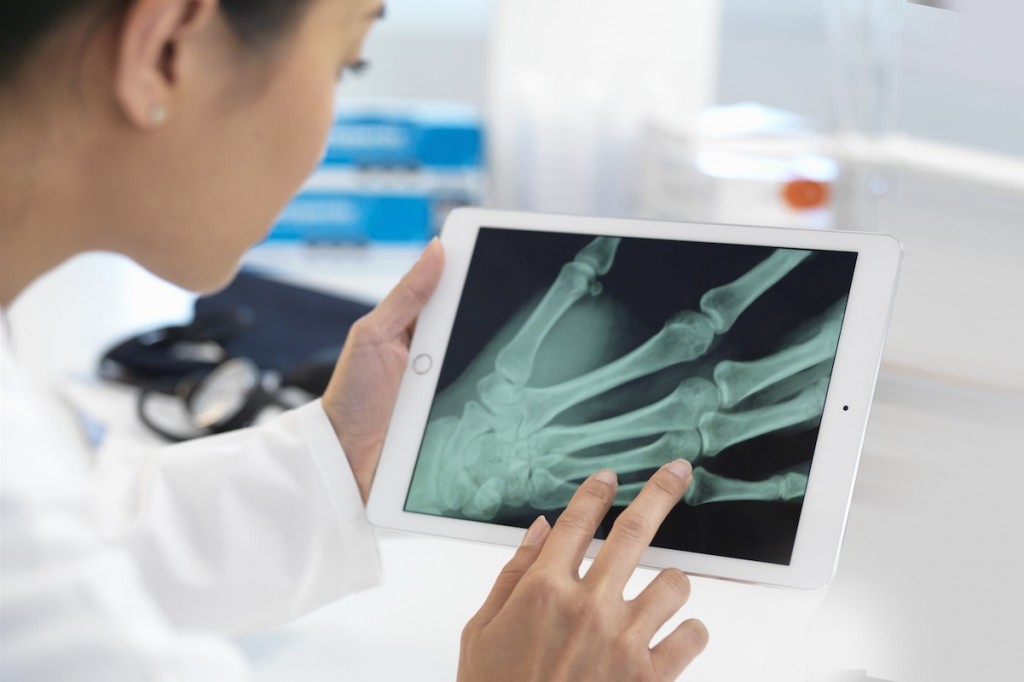A Helping Hand
An orthopedic surgeon at Cooperman Barnabas Medical Center discusses common upper extremity injuries and how to keep safe.

Just as eating well and exercising regularly is key to keeping our bodies healthy, so too is protecting our upper and lower extremities from injury—and hey, you’re going to need those 10 fingers of yours!
Morris/Essex Health & Life chats with Nicole Lopez, M.D., orthopedic surgeon at Cooperman Barnabas Medical Center in Livingston, hand and upper extremity specialist and a member of the RWJBarnabas Health Medical Group. Dr. Lopez discusses the treatment options and recovery period for common hand injuries such as carpal tunnel syndrome, “avocado hand” (yep, it’s a thing!) and tips on protecting your hands daily.
You’ve said you love how helping people and science combine in this field. What do you mean by that?
Part of the appeal with orthopedic surgery is there is a lot of background and mechanics in how bones and muscles work and the relationship with ligaments. In the context of an injury, having to explain those mechanics to patients and giving them options to optimize their injury or fix what is broken is the perfect marriage of the two. It gives me the opportunity to teach them what’s wrong, and instead of deciding [on a treatment plan], I present all the options to them. It’s more collaborative, and patients respond a lot better to that approach.
How do you collaborate with the multidisciplinary team at Cooperman Barnabas Medical Center?
The biggest source of information that I have is my peers, such as other hand surgeons and our sports medicine physicians. We work closely with rheumatologists and the primary medical care teams to help manage the medical reasons behind joint pain and dysfunction.
Our occupational therapy and physical therapy teams are invaluable as well. Rehabbing and making an extremity function in the long term is essential. It’s very case-by-case, but there is rarely a surgery that doesn’t require therapy afterward. We have outpatient facilities that offer OT and PT, such as the Barnabas Health Ambulatory Care Center.
What are some of the most common hand injuries you see in your practice?
The most common complaints we see are of carpal tunnel syndrome and trigger fingers, which are more overuse injuries than caused by trauma. Carpal tunnel is mostly numbness and tingling in the fingers and triggering is an advanced tendonitis of the flexor tendons which makes it difficult and painful to move the finger. We try to treat these patients conservatively with braces, steroid injections and/or therapy. If this fails, the next step is surgery to take the pressure off the tendon or nerves.
What does surgery and recovery look like for a patient with carpal tunnel or trigger finger?
Surgery is a quick outpatient procedure that is mostly done under local anesthesia with some mild sedation. After the procedure, we wait for the skin to heal, which takes about 10-14 days. After that the focus switches to regaining motion in the fingers. Treatment for torn soft tissue structures or broken bones takes a bit longer, usually 6–8 weeks until those injuries are fully healed. Once they are healed, you need therapy to make the hand fully functional. So overall, we tell patients to expect recovery somewhere in the 8- to 12-week timeframe depending on what the injury is.
Do you perform these surgeries endoscopically or open?
The data for outcomes is fairly similar for both. In my hands, the incision for open carpal tunnel release is not that much more significant than for endoscopic surgery, and for that reason I prefer to do my carpal tunnel releases as an open procedure.
What other common hand injuries do you treat?
Falls onto an outstretched hand are common and result in wrist or elbow fractures. Kitchen injuries are extremely common too. People who cut open avocados while holding them as opposed to using a cutting board very frequently will slip and get lacerations of both the skin as well as the tendons. We literally call it avocado hand! People also get injured on a mandolin, the really sharp tool that makes thin-sliced vegetables. You should only use this with a stable surface and something protecting your fingers.
Aside from the obvious bleeding, what are common symptoms in hand injuries?
A dull aching pain or a dull discomfort, especially when going to grab something. You might have no pain at rest but there could be a specific area of discomfort when performing an activity. If the pain is not improving steadily over the few days after an injury, come see us. We want to make sure it’s just a sprain and not something that needs to be fixed surgically. Any pain that lingers beyond several days usually warrants further evaluation.
How can we protect our hands?
Be mindful of equipment you’re using, and pay close attention to what you’re doing so you minimize distractions. You can easily slip when cutting vegetables, for example. Burns are also more easily avoided if you’re mindful of what you’re doing. If you’re skating or participating in a similar sport, using a wrist guard to minimize the force that goes to your wrist if you fall can be helpful. In any job that involves using your hands, always use gloves and the proper equipment.
For those of us that work office jobs and are at our computers all day, how can we avoid carpal tunnel syndrome?
Make sure you’re sitting in an ergonomically correct position. That may be different for each person—it’s specific to how your hand feels best positioned when you’re doing work. That may take some trial and error in figuring out what works best for you.
Learn more or book an appointment with the orthopedics team at Cooperman Barnabas Medical Center.